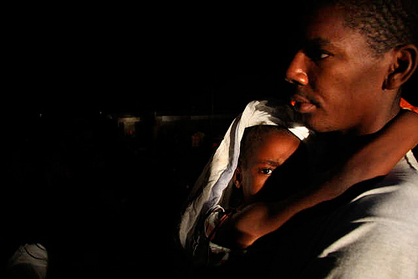Haiti: How to Help
More than a week after the devastating 7.0-magnitude earthquake hit Haiti, trapped survivors are being rescued as aftershocks continue to rock the scarred earth. Close to a third of the country’s population still lacks the basic necessities of food and water, a safe place to stay and medical attention.
The death toll is expected to number between 100,000 and 150,000, according to Haitian officials. The world may never know the exact count, with some people trapped in the rubble who may never be found. Poverty-stricken Haiti will soon face the start of rain season, and after that, hurricanes.
In what is undoubtedly a breathtaking humanitarian crisis, there is hope. Lives are still being saved, and supplies and assistance are making their way to people in need.
You Can Help
Support international organizations set up to help in disasters. Non-profit relief organizations like the Red Cross and Doctors Without Borders (Medecins San Frontieres) activate response teams as soon as a disaster strikes. To build the networks, alliances and resources that enable assistance, these organizations must raise money that is not disaster-specific. When making a gift to one of these organizations, consider not designating it for Haiti relief so your dollars can help build the capacity of the organization to help in the next disaster. (For Doctors Without Borders, this means designating your gift to their Emergency Relief Fund.)
Join Artists for Haiti on Thurs., Jan. 28 in Santa Monica, CA. The evening event will feature music, short films and a silent auction in an effort to raise money to help ground-level doctors and rescue workers. James Franco, Brandon Boyd and Will McCormack will be among the event’s celebrity hosts. A minimum donation of $100 is requested. Visit Artists for Peace and Justice for more information.
Visit The Goods: Gifts that Give Back to see how your donation can be used to help earthquake survivors. Twenty-five dollars could be used to immunize a child, for example, and $100 could buy the surgical supplies needed for emergency surgeries.
A Long Path to Recovery
In the virtually leveled capital city of Port-au-Prince, short-term relief efforts will be followed by years of recovery and rebuilding. Critical infrastructure will be rebuilt – roads, bridges, schools, hospitals, government buildings. The physical scars of the earthquake will scab over and heal, but Haiti will never be the same.
The generation of Haitian citizens that will grow up in the earthquake’s recovery is the country’s most vulnerable population – orphaned children. Reports are already surfacing of more than a dozen children being abducted from hospitals. International adoption agencies are warning against what they call premature adoption as they hope to stall placement of orphaned children with adoptive families overseas.
“A child who has started growing up in a community and lost their parents still has some inner security from knowing their environment … in fact, sometimes parents are found years later still mourning the child they thought was dead,” said Andrew Cates, CEO of the UK-based SOS Children’s Villages, which provides long-term care for orphaned children in family homes.
Protecting children and tracing their families is a top priority for many child advocacy organizations. As part of the long recovery process, children will be reunited with family members or placed with extended family, neighbors, family friends or community members. Eventually, some of these children will be adopted outside of their communities and country.
LUXies, in this very moment, we all have a chance to help Haiti and to help Haiti help itself. Take this moment to make a difference.
Tagged in: earthquake, help, haiti, relief,




